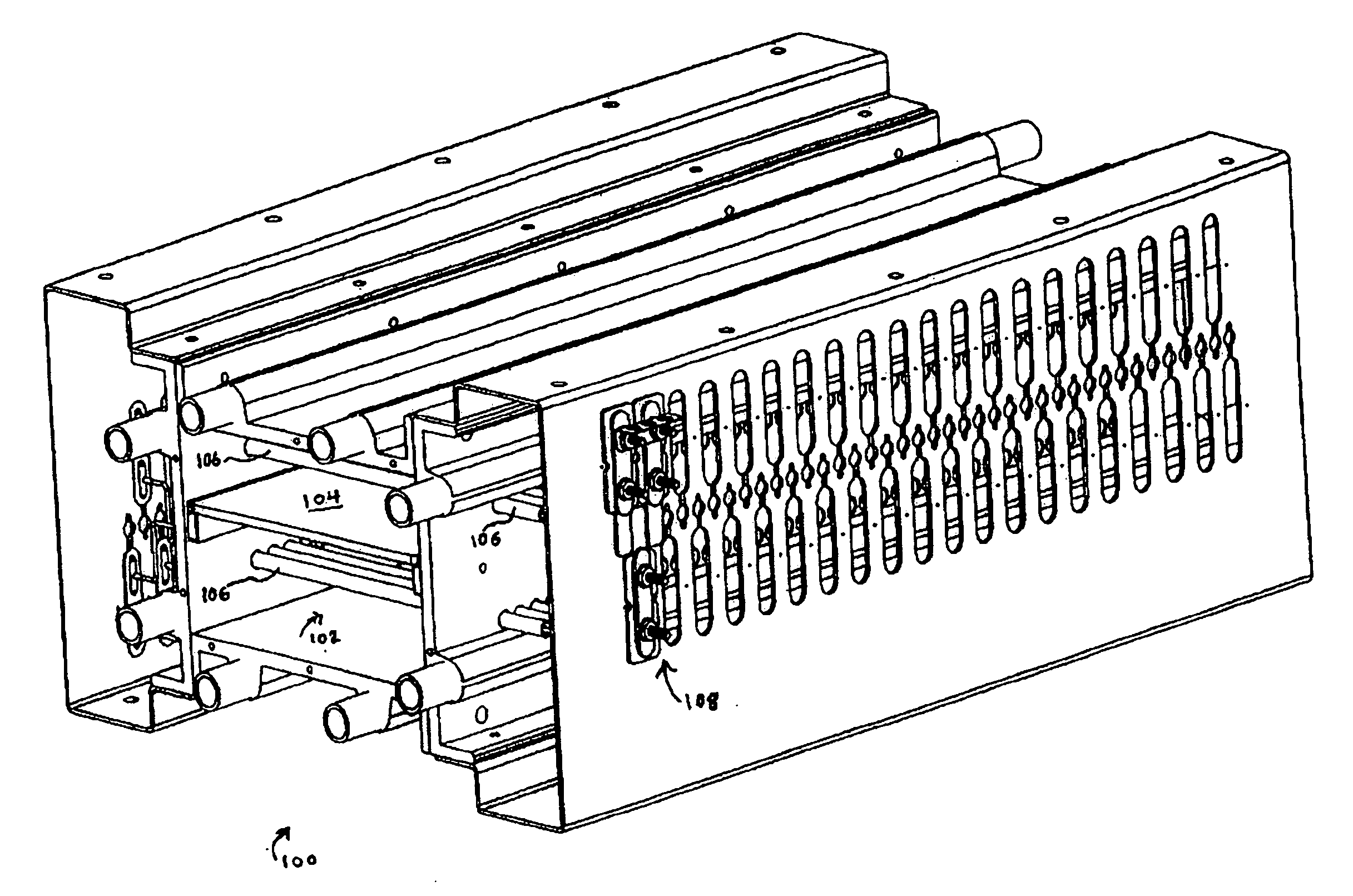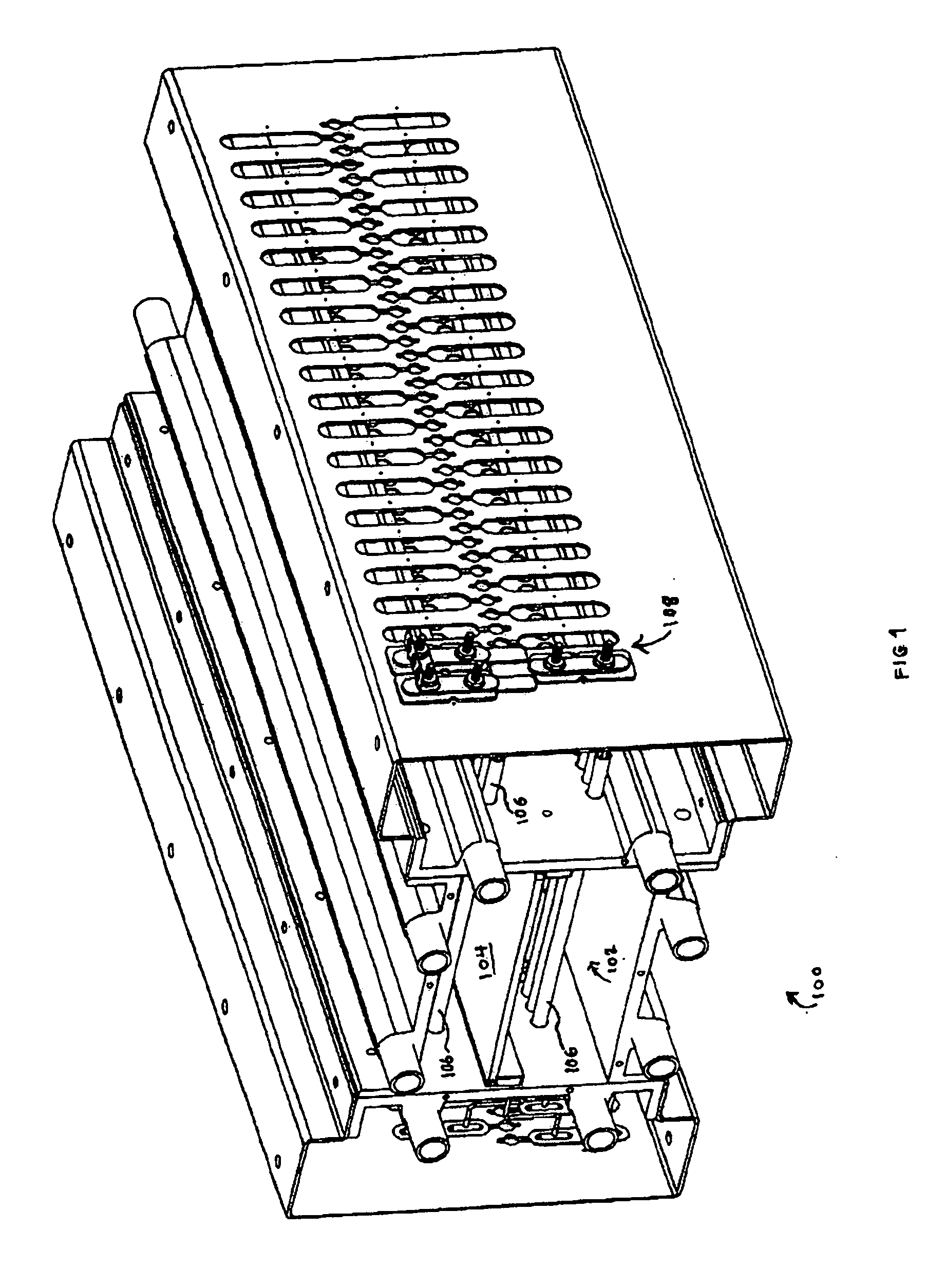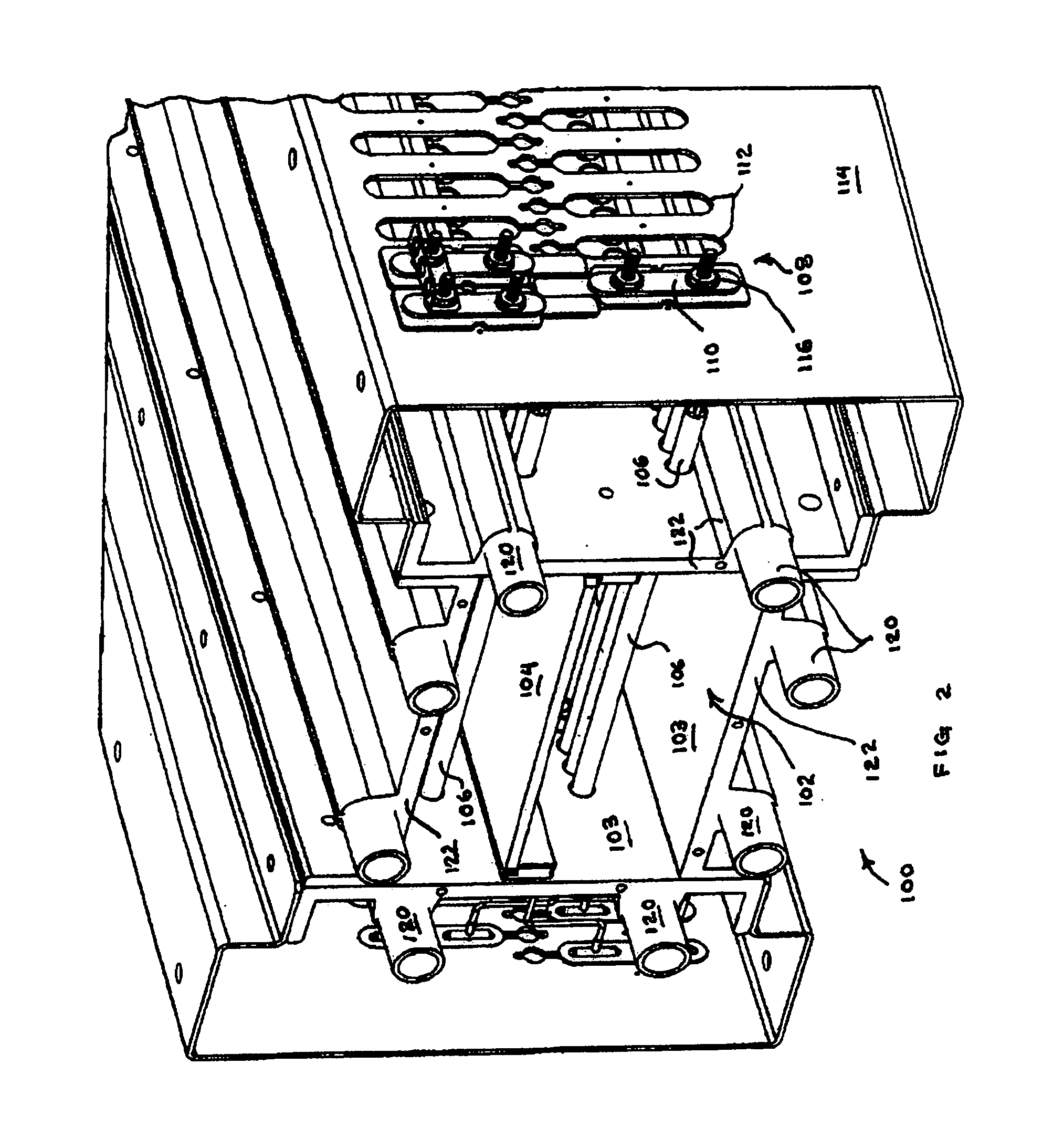High reflectivity atmospheric pressure furnace for preventing contamination of a work piece
a technology of high reflectivity and atmospheric pressure furnace, which is applied in the direction of furnaces, muffle furnaces, lighting and heating apparatus, etc., can solve the problems of cold process chamber and hot look, and achieve the effect of improving the performance of the substrate, reducing the amount of contamination, and increasing the purity
- Summary
- Abstract
- Description
- Claims
- Application Information
AI Technical Summary
Benefits of technology
Problems solved by technology
Method used
Image
Examples
Embodiment Construction
[0061] Reducing Source Temperature Required To Heat A Workpiece Referring to FIGS. 1, 2 and 3, a furnace 100 is provided that includes a process chamber 102 for accepting a workpiece 104, typically a semiconductor substrate, for processing. A plurality of heating elements 106 are disposed in first and second substantially parallel banks or arrays, above and beneath work piece for evenly heating the workpiece. The heating elements have a threaded terminal end 108 disposed in a ceramic spacer and insulator 110 that is conformably received in an aperture 112 in a side wall surface 114 for holding the distal ends of heating elements. The threaded end includes an attachment means, such as a locking nut 116 for attaching a lead to a source of electric power.
[0062] Referring to FIG. 1, an objective of the invention is to minimize the above described problems of conventional furnaces by identifying a thermal design that would reduce the heating element temperature. As mentioned, the heatin...
PUM
| Property | Measurement | Unit |
|---|---|---|
| temperature | aaaaa | aaaaa |
| temperatures | aaaaa | aaaaa |
| temperature | aaaaa | aaaaa |
Abstract
Description
Claims
Application Information
 Login to View More
Login to View More - R&D
- Intellectual Property
- Life Sciences
- Materials
- Tech Scout
- Unparalleled Data Quality
- Higher Quality Content
- 60% Fewer Hallucinations
Browse by: Latest US Patents, China's latest patents, Technical Efficacy Thesaurus, Application Domain, Technology Topic, Popular Technical Reports.
© 2025 PatSnap. All rights reserved.Legal|Privacy policy|Modern Slavery Act Transparency Statement|Sitemap|About US| Contact US: help@patsnap.com



